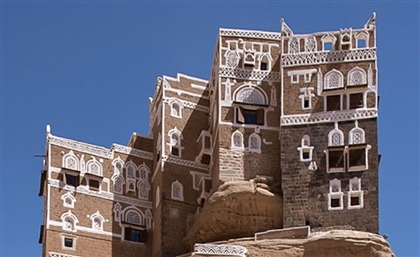Shaharah Bridge Literally Walks You Through Yemen’s History
Although few can see it in person due to the ongoing conflict in Yemen, this bridge stands as an enduring reminder of the nation's history.

Documentation goes far beyond page margins and inky pen stains. It imprints itself on walls, stands erect in the face of time’s iron grip and manifests itself as a series of etches on buried paraphernalia. Further cementing that notion is Yemen’s Shaharah Bridge. Lying atop a 2600 metre stretch of land - better known as Shaharah village - the historical structure pays tribute to bygone eras laced with wars and communal sessions imbued with socio-cultural discussions.
Constructed during the late 17th century by architect Sahal Al-Yaman, the bridge joins Jebel Al Amir and Jebel Feesh. In an attempt to connect the settlement of Shaharah through limestone blocks, Shaharah bridge permits life to exist and exuberant scholars, jurists and poets room to explore their peripheral ongoings. A quick glance at the arch's base reveals previous attempts to bridge this narrow but treacherous chasm.
The bridge, along with Dar al-Hajar and Shibam's walled city, has become a symbol of Yemeni tourism, further supplemented by their presence on the ten-year coin. However, for many years, the bridge saw no visitors due to ongoing conflict led by religious insurgencies. Whilst an architectural masterpiece, the Yemeni bridge continuously undergoes tight-knit security measures to ensure no further turmoil is inflicted upon surrounding village residents and aboriginal peoples.
Government advisories currently warn against travelling to Yemen due to civil unrest. However, even if we can’t see it in person, it is worth noting the enduring nature of such an important piece of architecture - and perhaps more important the history and people behind it.
- Previous Article Explore Middle Eastern Wonders Aboard Windstar’s Luxury Cruises
- Next Article Travel Across History on Egypt's Most Iconic Bridges
Trending This Month
-
Nov 29, 2025






















